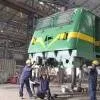At present, India’s paints and coatings industry is worth Rs 62,000 crore but estimated to touch Rs 1 lakh crore in the next five years, according to paint manufacturing company Akzo Nobel India. While the most common application of paints is to improve the aesthetics of a building, paints and coatings can also play a significant role in improving its performance. CW highlights some of these key applications.
Indoor ambience
Paints with low volatile organic compounds (VoCs) are a healthier environment-friendly choice. Paints with a VoC concentration between 0.3 mg/m3 and 0.5 mg/m3 are regarded safe. “Using low-VoC and non-toxic paints has become a standard practice to align with principles of sustainable construction and improve the quality of indoor air, thus making buildings more productive spaces for their occupants,” says Mili Majumdar, Managing Director, GBCI India, and Senior Vice President, US Green Building Council (USGBC).
“We have significantly reduced the utilisation of materials (including paints) containing VoCs to reduce harmful lead-based vapours and prioritise the well-being of occupants and the environment,” says Raman Sapru, Director, Engineering & Design, Mindspace Business Parks. “Better indoor air quality contributes to a healthier, more sustainable built environment.”
While evaluating a building’s green quotient, the Indian Green Building Council allocates 6-8 points out of 100 to the use of low VoC and high solar reflective index paints, points out Naveen Akkina, Senior Counsellor (Architect) - Green Buildings, Indian Green Building Council.
Energy-efficiency
Rising outdoor temperatures affecting indoor temperature conditions have made coatings and paints an increasingly important insulation material, observes Majumdar.
Paints and coatings to insulate buildings and make them more energy-efficient abound (see box). To speak of a few, “white paint typically reflects about 80 per cent of visible light, while absorbing ultraviolet (UV) and near-infrared (near-IR) rays, which warm buildings,” points out Vishal Kakkar, Founder, Envisage. “Therefore, painting the roof of a building white reduces the indoor temperature by 3-7°, thereby reducing the air-conditioning load. We prefer using Thermatek, a heat-reflective paint, for this purpose, and have done so for the White Flower Hall, The Mann School.”
“Heat-reflective coatings like Dr Fixit’s Roofseal Select and Roofseal Classic can help keep interiors cool but we have not found the improvement in ambience to be easily measurable,” says Anupam Singh, Co-Founder, aapkapainter.com.
In Rajasthan, not-for-profits that have piloted the application of coats of white solar-reflective paint on the roofs of the poor have reported a temperature drop of 2°. A 2020 study by the Indian Institute of Public Health in Gandhinagar showed that the temperature on roofs coated with solar-reflective paint was 1° lower than uncoated tin roofs. And a Chennai-based study by Hindustan University showed that the use of white solar-reflective paint with a solar reflectance of 80 per cent lowered the average temperature inside a test structure from 35.75° (before the application of the paint) to 31.59° (after application). However, roofs may need to be repainted almost annually for the effect to last.
The USGBC encourages the use of solar radiation-reflective paints and coatings that prevent excessive heat absorption, thus lowering indoor temperatures and reducing the strain on HVAC systems, says Majumdar.
Besides solar-reflective roof coatings, phase change materials (PCMs) incorporated into coatings can help regulate indoor temperatures by absorbing and releasing heat, according to Akkina. “These technologies go beyond low VoC and aim to improve building performance through enhanced thermal management.”
In commercial buildings, a significant portion of the exteriors is often glass covered, minimising the painted surface area, continues Sapru. “Still, to improve the performance of buildings in our business parks, we deliberately choose lighter paint tones for interiors to boost the light reflected, thus crafting well-lit environments that also lower the consumption of power. For instance, for Gera Commerzone in Kharadi, a 10,33,198 sq ft built-up building, we used Apcolite premium emulsion for the interiors and Asian Apex Ultima Protek externally.”
Crack prevention
Cracks occur mostly because of structural issues within the building from usage, ageing (rusting) or poor quality of construction, opines Singh. “Most high-end paints with elastomeric properties can help minimise the occurrence of external, visible cracks to a certain extent but they cannot stop cracks from occurring eventually when an inner problem exists.”
“We have widely used crushed stone textures to provide exceptional strength to wall finishes and help prevent issues like cracks, water leakage and staining,” says Shimona Bhansali, Interior Designer and Founder, Design Hex. “We crush marble and granite into the required granule sizes, and then either spray the mixture onto walls or apply it using trowels, depending on the desired levels of undulation.”
Waterproofing & durability
The waterproofing segment is populated by coating solutions as well as paints.
“Coating solutions such as those from Dr Fixit are meant to be applied ‘as is’, whereas paints with waterproofing qualities from companies such as Asian Paints, Berge and Nerolac must be blended with water prior to being applied,” notes Singh. “Blending paints with water is a subjective process that depends on the applicator’s expertise. For this reason, usually, waterproofing coating solutions offer better outcomes than waterproofing paints.”
Integrating nanotechnology into waterproofing solutions fortifies buildings like never before, besides making them more energy-efficient and eco-friendly, opines Manoj Pal, Founder, PaintMyWalls.in. “By seamlessly infiltrating minute cracks and pores, nanoparticles establish a robust and enduring barrier that is almost impermeable to water. Such coatings are resilient, resisting peeling even under intense pressures. Also, nanoparticles can create super-hydrophobic surfaces, mirroring the behaviour of water droplets skittering off a lotus leaf. Structures fortified with nanotech coatings embed a microscopic layer within the concrete that strengthens the material and endures heavier traffic, retaining its integrity for extended periods. For our waterproofing company, adopting nanotechnology-based materials was a natural evolution.”
A standout advantage of nanotech waterproofing lies in its influence on a building’s thermal performance, continues Pal. “Infrared radiation, a principal agent of heat build-up on terraces or walls, can be effectively repelled by nanoparticles, thus ensuring that buildings remain cooler. Also, the microscopic barrier created by nanotech waterproofing seals the minutest pores, cracks and gaps, thus managing heat transfer and curtailing unintended air movement and the entry of external moisture, pollutants, allergens and contaminants. This action markedly improves indoor air quality.”
Hydrophobic textures can help create stunning bathrooms with floor-to-ceiling textures that not only possess an ethereal appeal but also provide excellent water resistance, adds Bhansali. “Additionally, texture agencies that offer a variety of monolithic and seamless finishes, which work beautifully on furniture and doors, exude an earthy textural vibe while ensuring durability and easy maintenance.”
Futuristic solutions
“We are considering the use of self-cleaning paints, cutting-edge technology that has the potential to transform the way we build and maintain our buildings, says Dinesh Bansal, Director, UK Realty. “Besides increasing the lifespan of the paint by repelling dirt and grime with nanotechnology, self-cleaning paint when used to coat roofs can help minimise the consumption of energy by making buildings more sustainable and environment-friendly. It can also improve the aesthetics of a building by keeping it clean and free of dirt and debris. Properties in better maintained buildings command a higher value. As this technology develops, we expect to see more innovative applications.”
We look forward to more promising developments in the paints and coatings market.
Select appropriate combinations
To protect a building from cracks and ageing and heat ingress while also waterproofing roofs and walls, a combination of both paints and coatings may need to be applied. Meena Murthy Kakkar, Founder, Envisage, shares some winning combinations: “For the Saraswati Global School, Faridabad, we opted for Dulux Aquatech Roof Waterproof solar-reflective coating for terrace roofs and parapets, while for a residence in Panchshila Park, Delhi, we chose Berger WeatherCoat Kool & Seal. These products are ideal for masonry or concrete surfaces, both for fresh coats and repainting. They help bridge cracks up to 2 mm. Their high solar-reflective index with sun reflect technology lowers the interior temperature by up to 8°. A high anti-carbonation rating offers excellent foot trafficability. Multi-surface adhesive properties make them amenable to being applied over plaster, concrete, brickbat Coba, China chips and mosaic tiles.”
Energy-efficient coatings in the Indian market
Naveen Akkina, Senior Counsellor (Architect) - Green Buildings, Indian Green Building Council, lists the various energy-efficient coatings available in the Indian market:
Cool roof coatings: Coatings designed to reflect more sunlight and absorb less heat, helping to keep buildings cooler and reduce the need for air-conditioning.
Thermal barrier coatings: Coatings that provide insulation against heat transfer, helping to maintain indoor temperatures and reduce the energy needed for cooling or heating.
Infrared reflective coatings: Coatings that reflect infrared radiation, which can help lower surface temperatures and decrease the heat absorbed by buildings.
Solar-reflective paints: Paints that contain pigments that reflect solar radiation, reducing heat absorption and contributing to energy savings.
Nano coatings: Some nano-coatings offer thermal insulation and UV protection, helping to regulate indoor temperatures and reduce energy consumption.
Low-E (low-emissivity) coatings: Coatings often used on windows and glass surfaces to reduce heat transfer between the indoors and outdoors.
Insulating ceramic coatings: Coatings providing a thermal barrier that can be applied to various surfaces to improve insulation and energy-efficiency.
When selecting an energy-efficient coating, it’s important to consider factors such as the specific application, the building’s location and the coating’s effectiveness in reducing energy consumption, cautions Akkina.




















